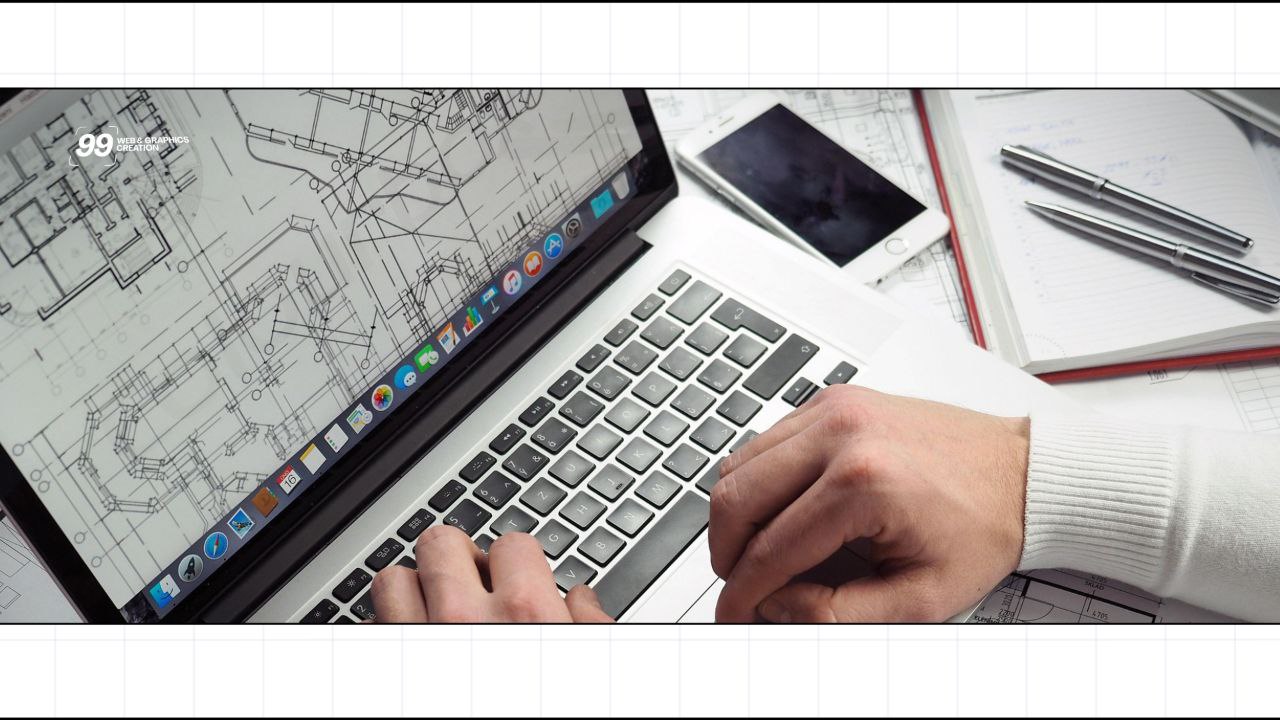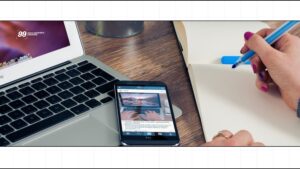Would you trust a brand in a tenth of a second? You already do.
Research from Princeton shows that people form first impressions in just 0.1 seconds. That means even before you speak, your audience is already judging whether or not they trust you. It is fast, subconscious, and influenced by previous experiences. While this may seem unfair, it is actually your greatest opportunity.
We are in a world where attention spans are short and competition is just a scroll away. Therefore, your visual identity, which includes your fonts, logos, colours and overall presentation, must speak volumes before you even introduce yourself.
If you are building a business that takes itself seriously, keep reading. This post will guide you through essential steps for building a visual identity that not only looks impressive but drives results.
Why Your Brand’s Visual Identity Is Important
Your visual identity is the first impression your audience gets. It is how they remember you and recognise your presence in a crowded space. Think of it as the face of your business. It gives life to your values, your energy, and the way you want to be perceived.
More than just design, branding shapes perception. If you do not define what your brand stands for, others will, and they might get it wrong.
1. Your Logo: A Strategic Signature
Your logo appears on everything, including your website, social media, merchandise, packaging, and even your email signature. It is not just an image. It is the visual signature of your brand. Many businesses fall into the trap of using logos that merely describe their service. For instance:
A coffee cup logo tells people you sell coffee. But does it reflect whether your business is eco-friendly, high-end, casual, or community-focused? A powerful logo is designed to express personality. Whether your brand is minimalist, quirky, professional, or earthy, a skilled designer helps you translate your identity into a single, meaningful symbol.
Pro Tip: Avoid using generic templates. While platforms like Canva are helpful for brainstorming, a custom logo gives you originality, long-term recognition, and potential for trademark protection.
2. Colour Psychology: Communicate Without Speaking
Colour is not just visual, it is emotional. It tells people how to feel when they see your brand. Here is a quick guide:
Choose one core colour and two or three supporting colours. This creates visual harmony and memorability without overwhelming your audience.
Ask yourself: What emotion do I want my brand to evoke?
You can read our previous post on: The Psychology of Colour: What Your Brand Palette is Whispering to Your Clients
3. Typography: Let Your Message Dress Well
Fonts carry tone. They communicate attitude even before your words are read. Here are the main types suggested:
- Serif fonts (e.g. Times New Roman): Traditional, established, intellectual
- Sans-serif fonts (e.g. Helvetica): Modern, clean, professional
- Script fonts (e.g. calligraphy): Elegant, creative, often used in luxury or personal brands
- Monospace fonts (e.g. Courier): Technical, simple, functional
- Decorative fonts: Bold and expressive, ideal for standout headlines but not body text
Keep it simple. Pair one expressive font for headings with a clean, easy-to-read font for body content.
4. Graphic Elements: Details That Define You
These include icons, patterns, lines, and shapes that unify your brand across platforms. They help:
- Reinforce your design system
- Add personality and uniqueness
- Communicate themes or values
For example, a health brand might use leafy motifs, while a tech company could integrate geometric lines. Just ensure these elements serve a purpose and do not distract from your message.
5. Photography and Video: Visual Storytelling
Visual content makes an instant impact. Whether original or stock, your images should align with your brand’s tone and speak to your audience.
Ask yourself:
- Would my ideal client see themselves in this image?
- Does this photo express the mood and lifestyle my brand promotes?
- Are the colours, lighting, and editing consistent?
Establish visual standards for your media. This ensures uniformity whether you are creating new content or sourcing existing content
6. Put It All Together: Develop Your Brand Guidelines
Once your key brand elements are in place: logo, colours, fonts, graphic components, and imagery, document them in a brand guide. This guide should clearly explain:
- How to use your logo
- Colour codes and combinations
- Font hierarchy and pairings
- Image styles and tone
- Layout rules and spacing
This toolkit guarantees that everyone who works with your brand, from team members to external contractors, stays aligned and consistent.
Why Does All This Matter?
Because branding is not just about looking good. It is about being understood, remembered, and preferred. Strong branding helps you:
- Stand out in a crowded market
- Build instant trust
- Reflect your values visually
- Create an emotional connection
- Become memorable
You do not need to be a design expert to own a compelling brand. But you do need clarity and intention. Work with a brand designer who understands your mission, audience, and values, someone who helps you translate all of that into a striking and strategic identity.
First Impressions Are Everything
Conclusively, your brand’s visual identity is more than decoration. It is your digital handshake. When your look is clear, confident, and cohesive, people notice. More importantly, they believe. If you are ready to move beyond a Do It Yourself (DIY) look and build a brand that says “I mean business”, now is the time.
Let your brand speak with clarity. Let it speak with purpose. Let it speak before you do.




